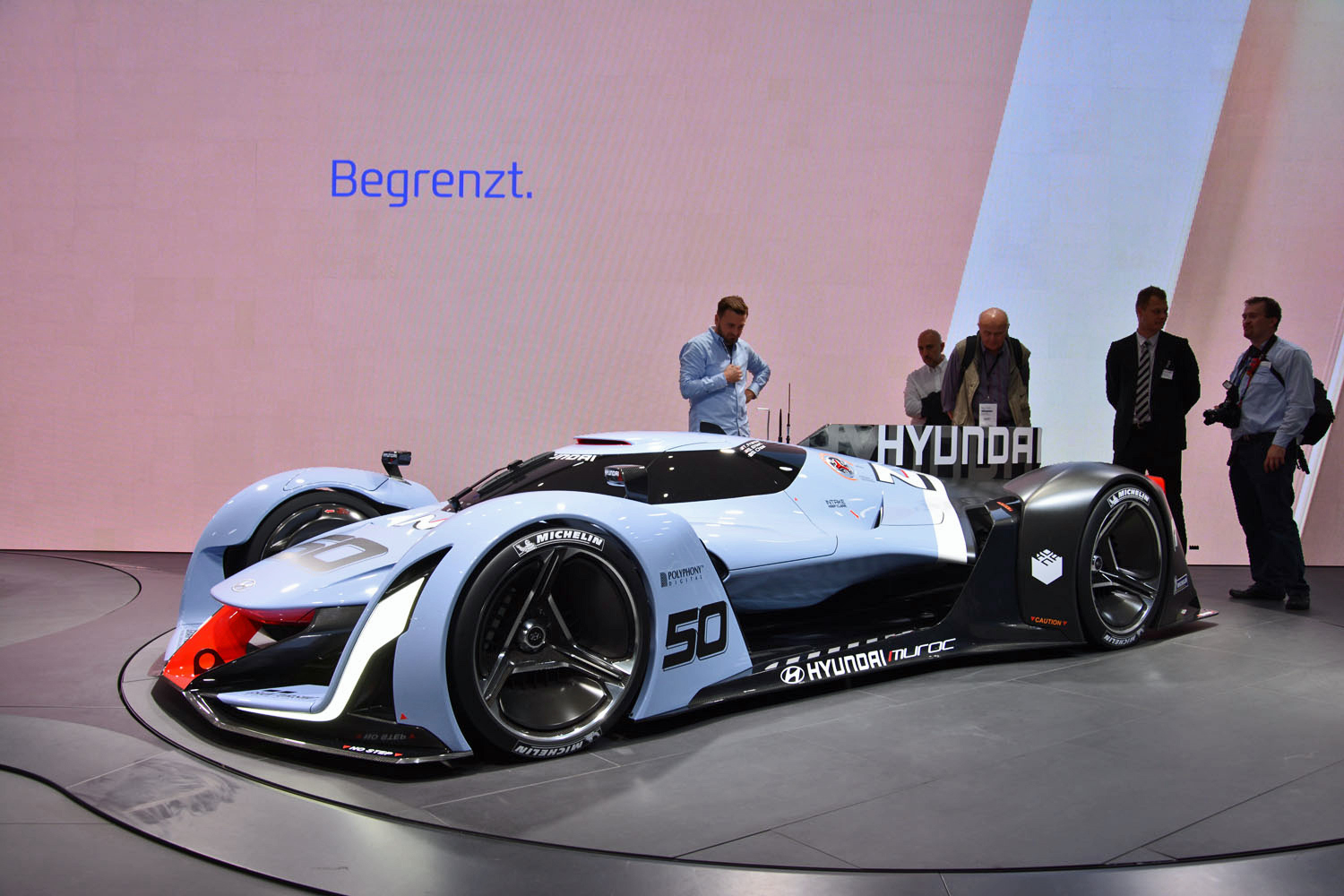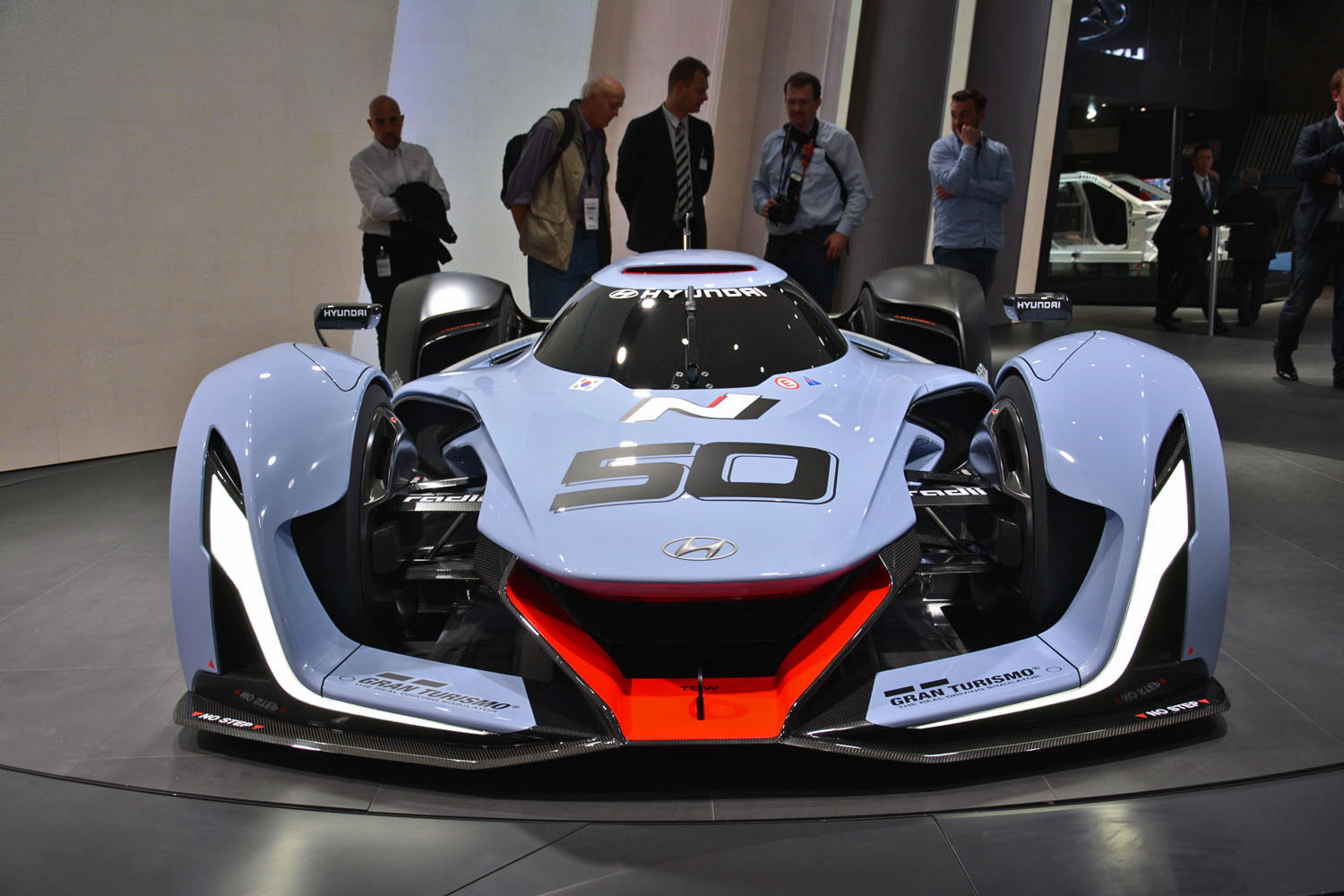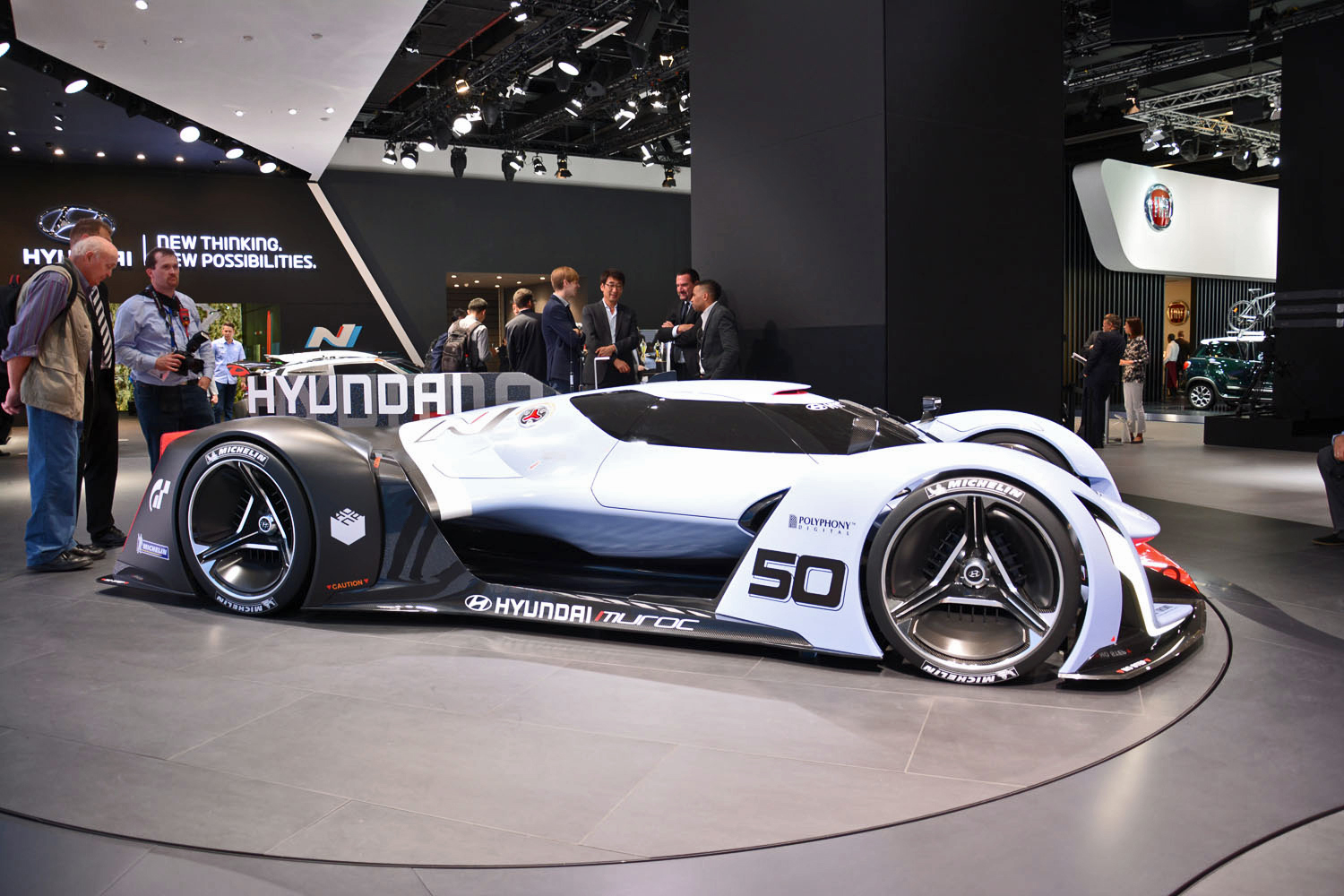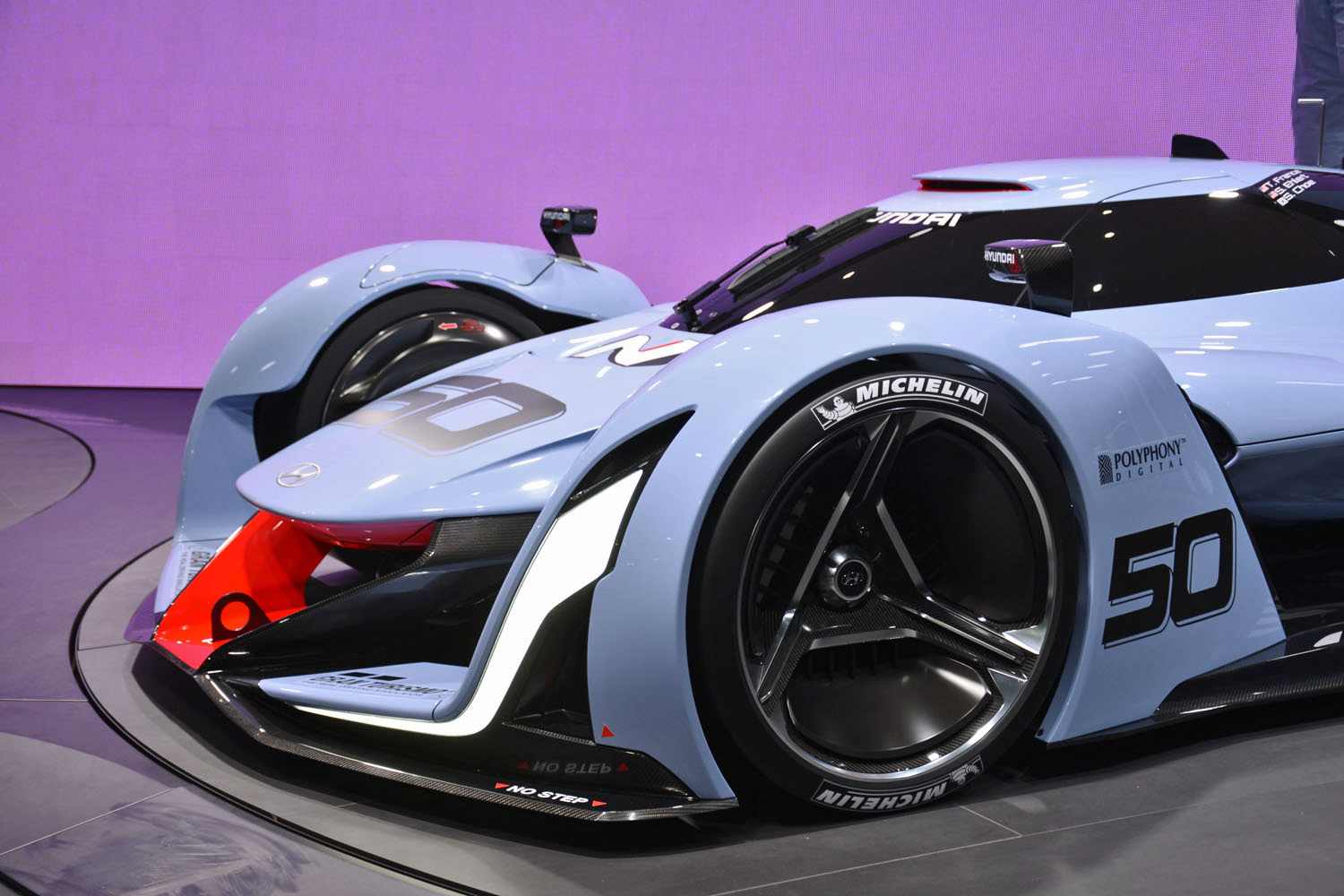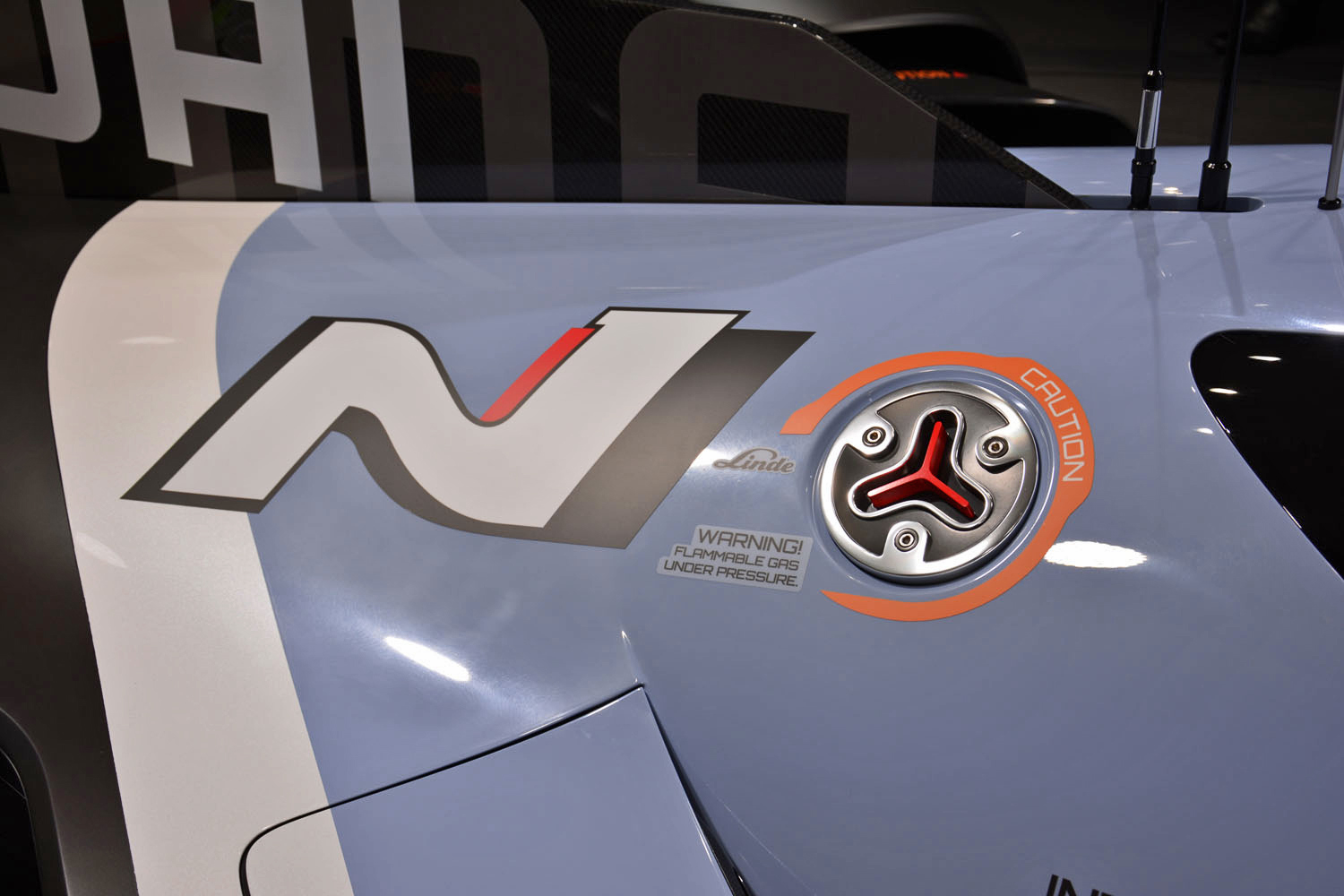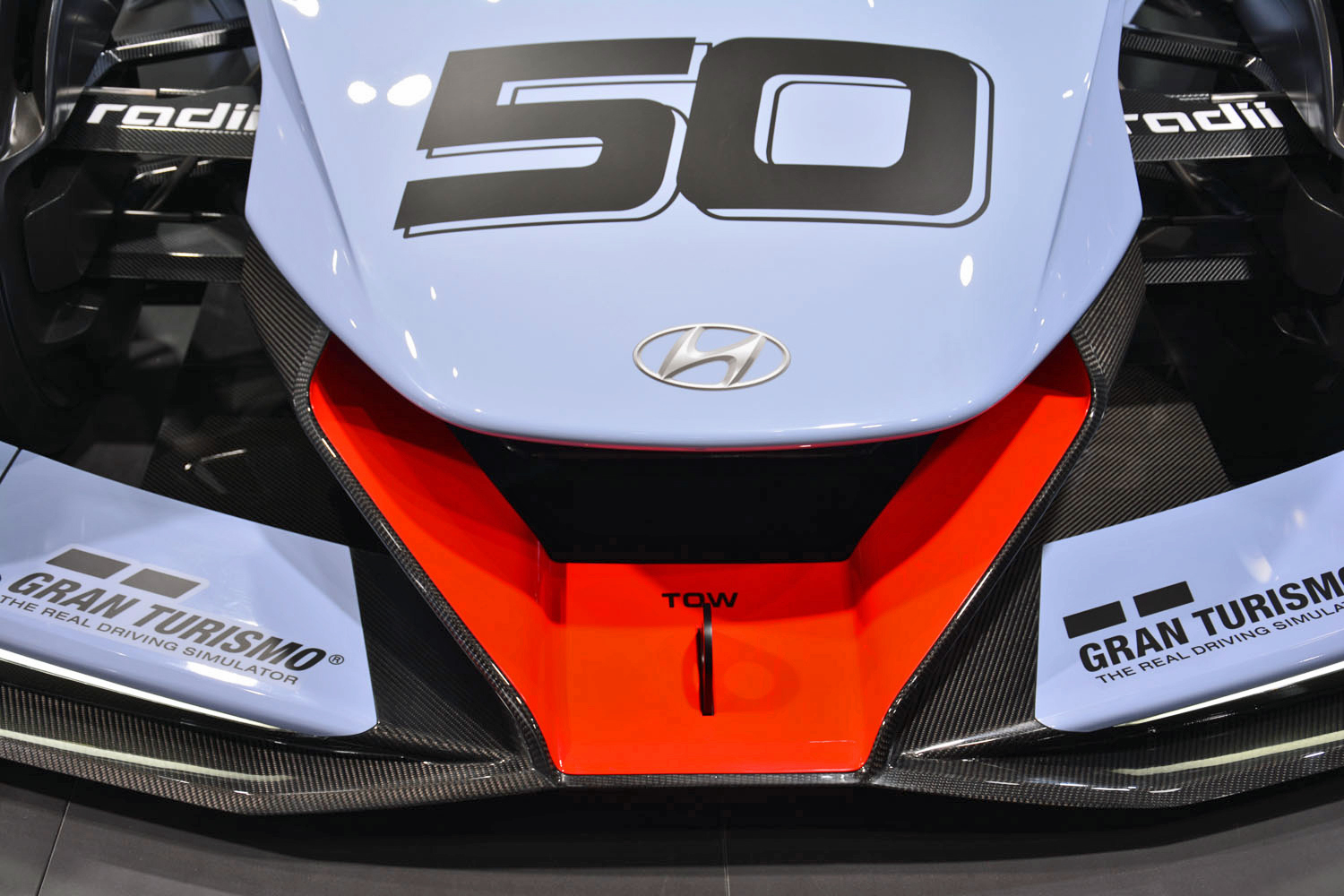The parade of Vision Gran Truism concepts just seems to get better and better, with a long list of carmakers creating no-holds-barred dream machines for the virtual world of Gran Turismo 6. The latest concept comes from Hyundai, which is using the virtual racer to promote its larval N performance sub-brand.
The Hyundai N 2025 Vision Gran Turismo is a futuristic race car powered by hydrogen fuel cells. Hyundai has already shown interest in hydrogen with the Tucson Fuel Cell, but this radical concept is an expression of confidence that technology will evolve into something extraordinary.
Hyundai’s concept hydrogen powertrain features two fuel-cell stacks, providing 670 horsepower. They’re augmented by a supercapacitor, which stores electrical energy recovered during braking, kicking in another 201 horsepower. The total of 871 hp is sent to four motors, one mounted in each wheel hub.
To keep weight down, the N 2025 Vision Gran Turismo features a carbon fiber-reinforced plastic monocoque, allowing for a curb weight of just 972 kilograms (2,142 pounds). It’s designed to achieve a low center of gravity, and the best aerodynamic performance. That’s why it looks like a Le Mans prototype on steroids.
Hyundai managed to cram its trademark hexagonal grille into that forest of spoilers, ducts, and fins. It connects to a duct that directs air through the bodywork and out the back, minimizing the amount of air underneath the body, and in turn helping to create downforce. There are also air brakes that deploy according to speed and mechanical-brake use.
While it won’t make any of the sounds of a traditional internal-combustion engine, Hyundai promises a soundtrack as dramatic as the car’s bodywork. Air rushing through an onboard turbine, the “frequency” of the fuel-cell stacks, the cooling system, and the whir of the in-wheel motors will make for an interesting aural experience, the carmaker says.
The Vision Gran Turismo concept is the latest Hyundai to wear the letter N, the mark of a performance sub-brand that’s been under development for years. In theory, N could become Hyundai’s counterpart to Ford Performance or Fiat Chrysler’s SRT, but so far it’s focused mostly on managing the Korean company’s World Rally Championship (WRC) team, rather than building road cars.
Hyundai says future N cars will use powertrains and lightweight materials derived from its WRC racers but it could be awhile before any of these cars become available in the U.S. The N 2025 Vision Gran Turismo should be available for download on Gran Turismo 6 soon.
Editors' Recommendations
- 2025 Hyundai Tucson Plug-In Hybrid gets improved tech features
- Hyundai Sonata Hybrid’s solar roof can deliver up to 700 miles of ‘free’ driving
- New Hyundai Ioniq electric vehicle gets big boosts in range and horsepower
- Stylish and compact, Hyundai’s next concept is tailor-made for Los Angeles
- When it comes to green cars, Hyundai thinks the more, the merrier
